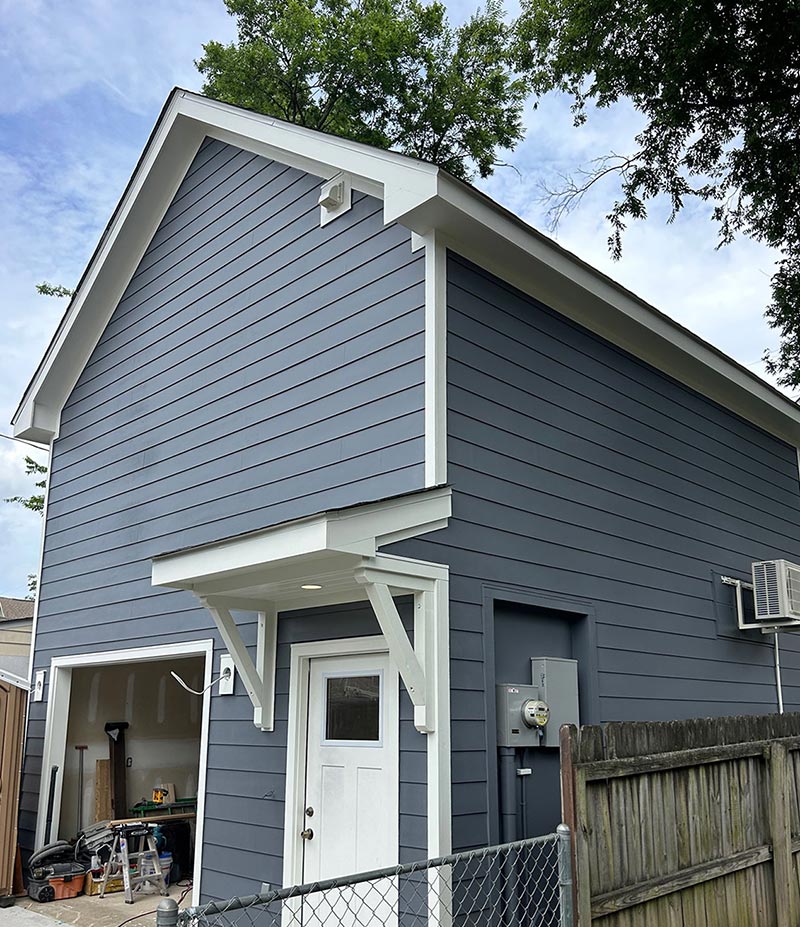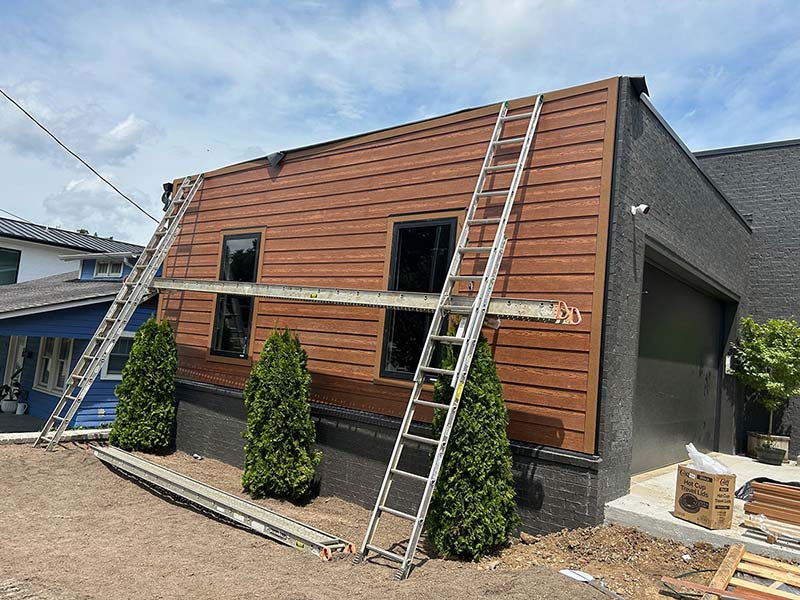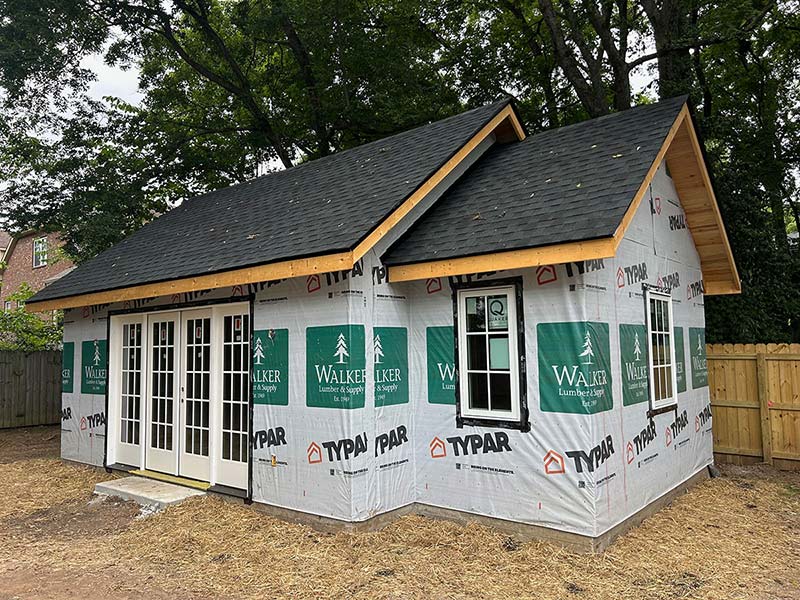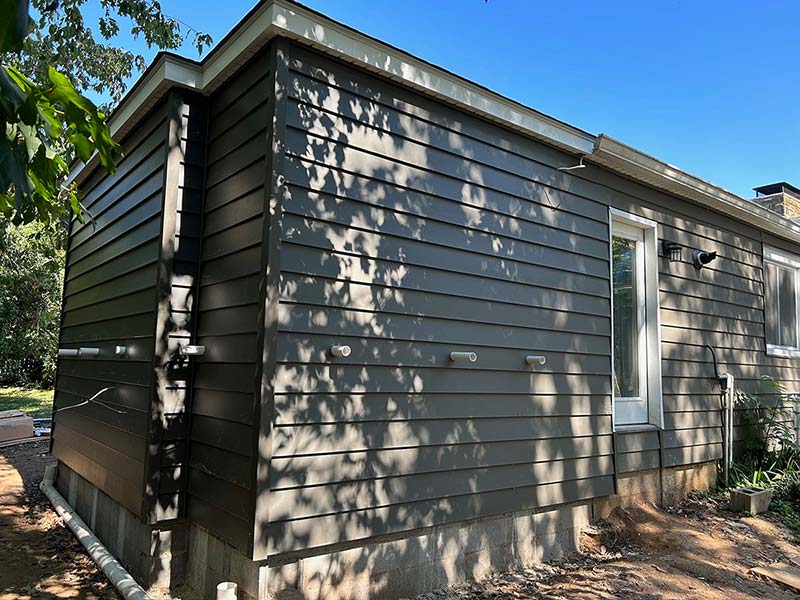Nashville Siding Repair
A Homeowner’s Guide to Repairing That Siding
Some mornings greet you gently. Others—well, they slam you with the unmistakable sound of water dripping in a place it absolutely shouldn’t be. A warped patch of siding catches your eye, and suddenly, your cozy little corner of the world doesn’t feel so sealed-off from the chaos.
But here’s the thing: That uneasy, pit-of-your-stomach moment? It’s fixable. And no, you don’t have to white-knuckle it alone.
When Damage Runs Deeper Than the Surface
What you can see? It’s rarely the whole picture. Siding might look a bit scuffed or tired from the outside, but just beneath that sun-faded layer could be a whole mess of problems waiting to introduce themselves. Moisture, mold, insulation failure—it all starts subtly. And if you wait too long, subtle turns into expensive.
Telltale Signs It’s More Than Just a Cosmetic Issue
Think of siding like skin. Cracks, bulges, discoloration—they’re all ways your house is trying to tell you something. Warped boards might mean trapped moisture. A sudden spike in your utility bill? That could be escaping air. Peeling paint indoors, weird drafts, or mildew smells where there shouldn’t be any—those are your early-warning alarms.
Use Light to Uncover the Truth
Grab a flashlight. No seriously—wait until dusk, then angle that beam low along the siding. See those tiny ripples and shadows? That’s where the secrets hide. Inside, do the same along your interior walls. A glint where it shouldn’t glint or a faint stain creeping downwards can mean water’s already made itself at home.

The First 48 Hours After Storm Damage
Clock’s ticking. After a storm sweeps through, you’ve got a small window to step in and stop minor damage from turning into a full-blown crisis. The first two days? That’s your best shot to get ahead of the mess. Act quick, document everything, and patch smartly.
Emergency Repair Tactics That Work
Let’s be honest—duct tape is not the best option for siding repair. But heavy-duty waterproof repair tape? That’s another story. Add some exterior-grade caulk and a plastic drop cloth or two, and you’ve got yourself a decent short-term shield. Think of it like putting on a raincoat over a ripped shirt. It won’t fix it, but it’ll keep the worst out till help arrives.
The Documentation That Saves Time and Money
Your smartphone is your best friend here. Snap wide shots, close-ups, videos—get it all. Include timestamps if you can, and don’t forget interior damage. Jot down the date the storm hit and what it did. That little digital diary will mean a lot when you’re on the phone with insurance or hiring a pro.
DIY Vinyl Siding Repair—What You Can and Can’t Do
There’s pride in fixing your own stuff. Totally get it. And in many cases, vinyl siding lets you do just that. But let’s be clear—there’s a difference between patching a hole and rebuilding a wall. It’s not much different with siding repair. So if you’re going the DIY route, know your limits and gear up properly.
Tools That Should Be in Every Homeowner’s Kit
Your starter pack? Zip tool (for unlocking those stubborn panels), utility knife with fresh blades, pry bar, tin snips, caulk gun, and exterior-grade sealant. Toss in some siding nails and gloves and you’re in business. Just don’t eyeball it—measure twice, cut once, and double-check your angles.
Matching Faded Panels Like a Pro
Nothing screams “DIY patch job” louder than a bright, brand-new panel smack in the middle of a sun-faded wall. Here’s a pro siding repair tip: pull a piece from a low-visibility area and install the new one there. That way, your repair blends in better up front and nobody’s the wiser. Color-match in-store with a real-life sample, not a guess off your phone screen.


Knowing When Replacement Is the Smarter Choice
There’s a line between fixing and fussing. If you’ve got patches on patches, or your siding feels more like a suggestion than a protective shell, it might be time to stop plugging holes and start fresh. Sometimes, ripping off the Band-Aid really is the kindest option for your house, and your sanity.
Indicators That Signal It’s Time to Replace
If panels are MIA, wood behind the siding is soft to the touch, or water damage keeps showing up like an uninvited guest, it’s time. Mold, warping that returns after every repair, and insects making homes in gaps? That’s not maintenance anymore. That’s surrender.
Long-Term ROI and Peace of Mind
Replacing your siding is a commitment, sure—but one with real payoff. Not just in terms of aesthetics (though yes, your curb appeal will soar), but energy savings, home protection, and resale value. In middle Tennessee, Hardie Board siding often recoups nearly 90% of its cost. Not too shabby for something that looks good and works hard.
Navigating Insurance Like a Seasoned Pro
Insurance isn’t out to get you, but it does love a loophole. And the longer you wait, the more of them it finds. That’s why having your ducks—or rather, your documents—in a row early can make all the difference.
Don’t Wait to Call
File the claim for the siding repair. Do it fast. Within 24 to 48 hours, if you can. That’s the sweet spot where insurance adjusters still take the timeline seriously. Delays signal neglect, and trust me, that’s not a battle you want.
The Claim Documentation Playbook
Start with photos. Add notes—times, dates, storm info. Include contractor assessments if you’ve got ’em, and save every receipt like it’s gold. If you can grab a weather report or radar image from the day things went sideways, even better. Organized claims get processed faster. Chaotic ones don’t.
The Routine That Keeps Siding Healthy
Siding, like teeth or tires, does better with regular checkups. Ignore it long enough, and the little issues multiply. But keep an eye out twice a year, and you’ll stay ahead of the bigger siding repairs. Think of it as giving your house a once-over before it asks for help.
Seasonal Maintenance Tips That Matter
Every spring and fall, take a slow walk around your place. Look for buckling, cracks, flaking paint, loose caulk. Use a hose and a soft brush to clean, but skip the pressure washer unless you want water where it shouldn’t be. Trim bushes that creep too close—your siding needs breathing room.
Why Post-Storm Inspections Save Thousands
Storms may pass fast, but their damage lingers. Check every exterior wall after a big one, especially around windows and doors. Small cracks today can mean interior mold next month. Catching it early can save you thousands, not to mention a whole lot of “I told you so” from your spouse.

The Bottom Line, It’s About Peace of Mind
Siding isn’t just about looks. It’s your armor, your insulation, your line of defense against wild weather. Taking care of it is taking care of everything inside it—your kids, your dog, your half-finished kitchen renovation.
So whether you’re patching a small hole or overhauling the whole shebang, remember: You’re not just fixing siding. You’re reinforcing peace of mind. And if you ever need a neighbor who happens to carry a toolbox? Petra Exteriors is just down the road.
Next step? Schedule your free siding inspection | call us at (615) 510-4052.
Siding Repair FAQs
How do I know if my siding damage is serious or just cosmetic?
If your siding is cracked, warped, or missing panels entirely, chances are it’s more than just a visual issue. Watch for signs inside, too—like peeling paint, mildew smells, or a sudden spike in your energy bill. These hint that moisture may be getting in where it doesn’t belong.
What should I do right after a storm damages my siding?
Act fast. Cover up gaps with waterproof repair tape or tarp, then take clear photos and videos of everything—inside and out. Log the date and weather conditions. The first 48 hours are key for stopping further damage and filing a solid insurance claim.
Can I repair vinyl siding myself, or should I call a pro?
Small fixes? Totally doable if you’re handy and have the right tools—like a zip tool, utility knife, and exterior caulk. But if the damage keeps spreading or you notice soft wood underneath, it’s time to call in a pro. No shame in knowing your limits.
When does it make more sense to replace siding than repair it?
If you’re constantly patching, or if you see rot, mold, or bugs making themselves at home in the gaps—it’s time. Full replacement offers better protection, higher energy efficiency, and boosts your home’s value. In Nashville, Hardie siding even returns close to 90% of its cost.
What kind of upkeep does siding need to stay in good shape?
Give your siding a check-up every spring and fall. Look for cracks, loose boards, or gunk near windows and trim. Gently clean with a hose and brush—skip the pressure washer. And after every storm, take a slow lap around the house to catch little issues before they become big ones.
Ready to Start Your Project?
You deserve a home that looks as solid as it feels. One that makes you proud. And one that you love every time you pull in your driveway.
So let’s chat. We’ll walk your property, talk about your vision, share some ideas—and see what your home could be.


